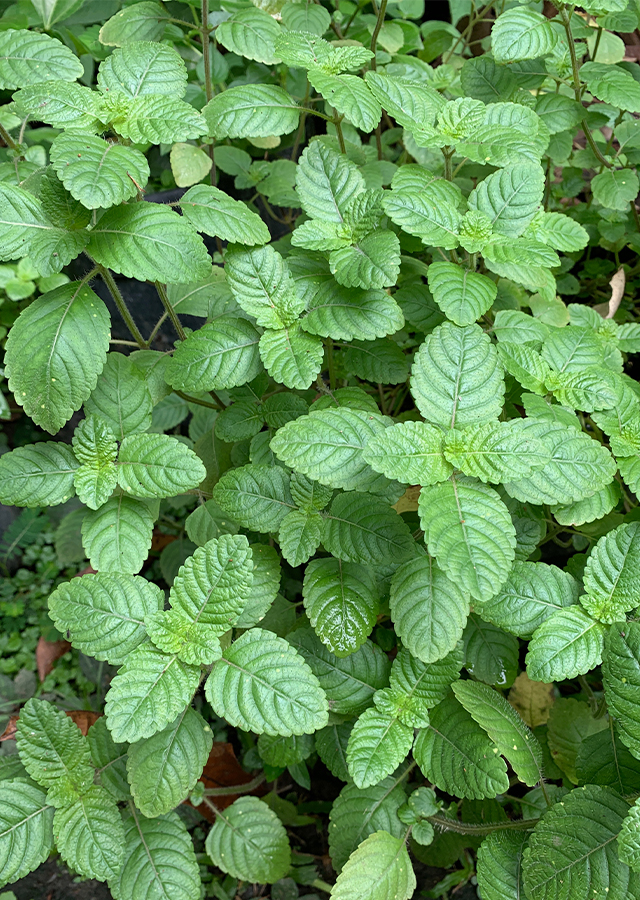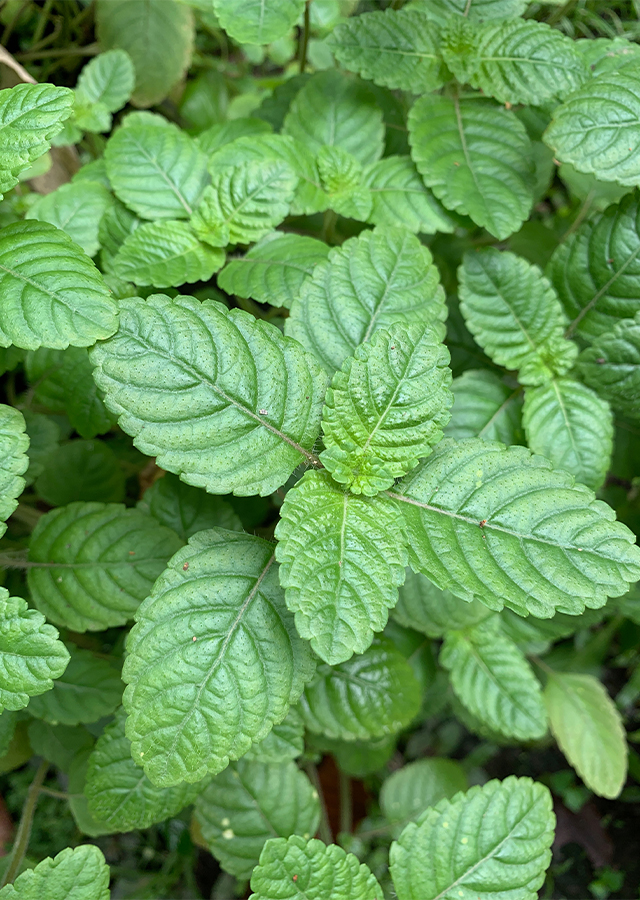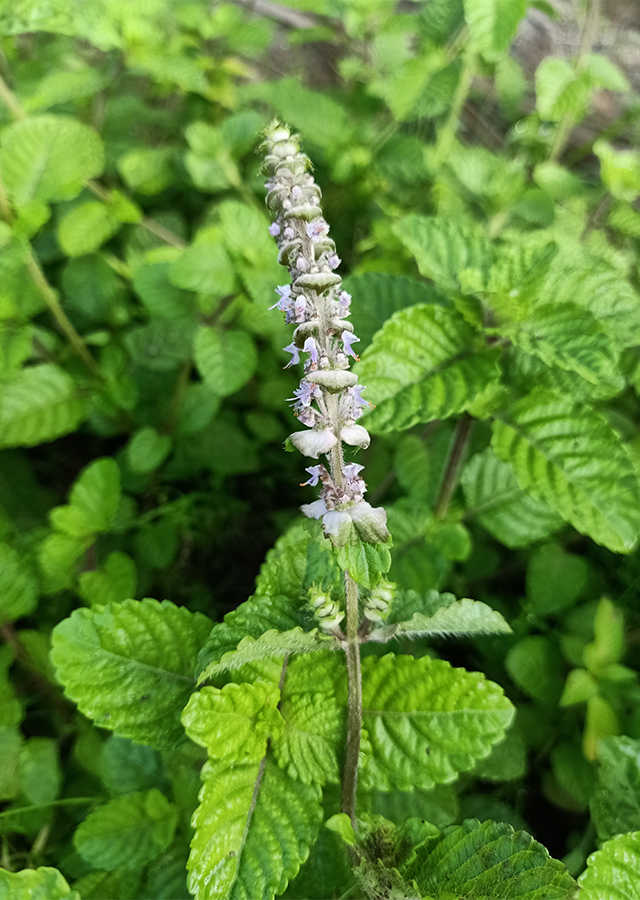Black Grass Jelly
Platostoma palustre (Blume) A.J.Paton
Lamiaceae
Location in our garden
Vegetable



Synonym
Geniosporum parviflorum Benth.
Mesona chinensis Benth
Mesona elegans Hayata
Habitus
Herbaceous. An evergreen perennial, aromatic, and herbaceous plant, growing up to 100 cm tall
Part Used
Leaves
Twigs
Growing Requirements
Full Sunshine
Need Shade
Habitat
Forest
Roadside
Shrublands
Overview
Black grass jelly is native to India, Myanmar and Indo-China. From there it spread to the Malaysian region, particularly into Central Sumatra, the whole of Java, the Lesser Sunda Islands (Bali, Lombok, Sumbawa), Sulawesi, the Philippines (northern half of Luzon) and East New Guinea. It is widely cultivated elsewhere around the world and is often canned and sold in Asian markets as Grass Jelly.
Vernacular Names
Xiancao, Leung fun cho (Chinese), Sian-chháu (Taiwan), Sương sáo (Vietnamese), Chinese mesona, Black cincau (English), Cincau Hitam (Indonesia)
Agroecology
P. palustre is a plant of the moist tropics, where it is found on roadsides, along ditches, on open grassy slopes, in forest margins, on dry fields of rice, and around springs, at elevations from sea level to 2,300 m. It grows in areas with year-round rainfall and also where there is a distinct dry season. Black grass jelly requires moist, but well-drained soil, and it is sensitive to drought. It may be locally common and tolerates both per-humid and seasonal conditions.
Morphology
- Stems - hairless, pilose or finely covered in short and stiff hairs.
- Leaves - simple and narrowly ovate to almost circular, green, 2-5 cm long and 0.8-2.8 cm wide, serrated or toothed at the foliar margin and oppositely arranged along the stems.
- Flowers - white, light blue to purple or lavender, 3 mm long and are arranged in a whorl-like inflorescence, arranged in branched clusters known as panicles, erect or pointed upwards at an oblique angle.
- Fruits - black, elongated fruits are known as nutlets.
Cultivation
- Propagated by seeds, but maily by stem cuttings 20 cm long.
- Planted on small ridges in well-prepared, loose soil. They are planted 25-30 cm apart on ridges at 40 cm spacing.
Chemical Constituents
β-carotene, α-tocopherol, caffeic acid, protocatechuic acid, ρ-hedroxybenzoic acid, vanillic acid, syringic acid, flavonoid, tannins.
Traditional Medicinal Uses
- It is an alternative to relieve heartburn.
- It can also ease stomach pains, nausea, and indigestion.
- The water soluble fibers in the body can bind to sugar and fat which is useful to prevent diseases such as diabetes mellitus, heart disease and stroke.
- The leaves are applied against dysentery, enteritis, abdominalgia, hoarseness and leucorrhoea.
- In Chinese folk medicine, the plant is used as a herbal medicine for liver disease, hypertension, diabetes and joint pain.
- The leaves of this species have been long used throughout South East Asia to make a black, slimy, cold drink.
Part Used
Reference Sources
- Dasuki, U.A., Sunarti, S. (2018). Mesona palustris (PROSEA). https://uses.plantnet-project.org/en/Mesona_palustris_(PROSEA). 22-01-2021.
- Dave's Garden. (2017). Platostoma Species, Chinese Mesona, Black Jelly, Black Cincau-Platostoma palustre. https://davesgarden.com/guides/pf/go/242708. 22-01-2021.
- Fern, Ken. (2014). Useful Tropical Plants. Platostoma palustre. http://tropical.theferns.info/viewtropical.php?id=Platostoma+palustre. 22-01-2021.
- John&Jacq-s Garden. (2018). Platostoma palustre. https://www.jaycjayc.com/platostoma-palustre-black-jelly/#.X3MkfmgzbIU. 22-01-2021.
- Multidisciplinary Digital Publishing Institute (MDPI). (2019). Analysis of Volatile Constituents in Platostoma palustre (Blume) Using Headspace Solid-Phase Microextraction and Simultaneous Distillation-Extraction. doi: 10.3390/foods8090415. https://www.ncbi.nlm.nih.gov/pmc/articles/PMC6770287/#B14-foods-08-00415. 22-01-2021.
- National Parks. (2016). Platostoma palustre (Blume) A.J.Paton. https://www.nparks.gov.sg/florafaunaweb/flora/4/8/4854. 22-01-2021

